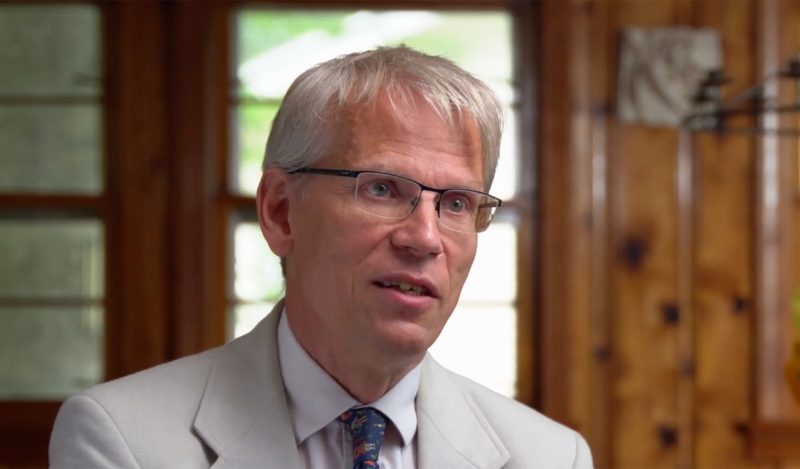The Brownstone Institute is pleased to announce that Dr. Martin Kulldorff is joining our institute as Senior Scientific Director. Having served as a professor at Harvard Medical School for the past ten years, he will guide the scientific activities of the Institute, particularly as it relates to the pandemic and the needed public health recovery and reform so that no country will repeat the terrible errors of 2020-21.
Professor Kulldorff’s position at Brownstone begins on November 1, 2021.
“We cannot overstate the excitement we feel about Kulldorff’s deep involvement with our work,” says Brownstone Institute founder and president Jeffrey Tucker. “He brings rigor, focus, and true brilliance, and his position portends great things for us as an institution.”
The Brownstone Institute was founded in 2021 to respond to this crisis with research, publishing, education, and other programs intended as a guiding light out of the crisis.
“Brownstone is being called to serve as a safe haven for genuine science, humane principles, and intellectual integrity during particularly brutal times,” Tucker says. “The hiring of such a great scholar is but one example of the work we will continue to do. His guidance will make an invaluable contribution to the restoration of public health and our ability to recover from the damage caused by Covid restrictions and mandates.”
About his new role, Kulldorff says that “governments, universities and scientific leaders have failed us during this pandemic, resulting in the biggest public health fiasco in history. The questioning of natural immunity after Covid infection is just one example among many. With the censoring of long-established public health principles, we need new organizations to safeguard public health for the future. As part of Brownstone, I am excited to work with other scientists and the public to foster open, rigorous, and intellectual scientific debate. We cannot allow 400 years of enlightenment to end.”
Kulldorff is an internationally well-known biostatistician and epidemiologist. During his career, he has developed new statistical and epidemiological methods for disease surveillance, including the early detection and monitoring of infectious disease outbreaks and the post-market drug and vaccine safety monitoring. His methods are widely used by public health agencies around the world, as are his free disease surveillance software: SaTScan, TreeScan and RSequential. He has served on scientific advisory committees to the Food and Drug Administration and the Centers for Disease Control.
Kulldorff came to public attention in 2020 for his role in authoring the Great Barrington Declaration, alongside Dr. Sunetra Gupta of Oxford University and Dr. Jay Bhattacharya of Stanford University. Based on basic principles of public health, the Declaration argues for better focused protection of older high-risk people while letting low-risk children and young adults live near normal lives to minimize the collateral public health damage on education, cancer, cardiovascular disease, diabetes, physical fitness and mental health, just to name a few. The Declaration quickly gained over 800,000 signatures including over 10,000 scientists and 40,000 medical practitioners. It also stirred controversy by proponents of the general lockdowns that we now know did not protect the vulnerable.
Kulldorff grew up in Umeå, Sweden, close to the arctic circle. He received a BSc in mathematical statistics from Umeå University in 1984. He then moved to the United States for his postgraduate studies as a Fulbright scholar, obtaining a PhD in operations research from Cornell University in 1989. He has subsequently worked as a biostatistician and epidemiologist at Uppsala University in Sweden, the National Cancer Institute in Maryland, the University of Connecticut and Harvard Medical School in Boston. In addition to his work at Brownstone, he will continue his disease surveillance research on infectious disease outbreaks and vaccine and drug safety, working with public health agencies in both the United States and abroad.
We invite you to engage with the Brownstone Institute, as we are seeking public support for our mission and expansion, of which the hiring of Kulldorff is one example. Write to us, subscribe to and disseminate our articles, donate, or engage with us on research projects. We also hope to meet you at one of the public conferences we plan to arrange.
Kulldorff has published over 200 scientific articles, such as:
Yih WK, Kulldorff M, Dashevsky I, Maro JC. A broad safety assessment of the 9-valent Human Papillomavirus Vaccine. American Journal of Epidemiology, 2021, 190:1253-1259.
Baral S, Chandler R, Prieto RG, Gupta S, Mishra S, Kulldorff M. Leveraging epidemiological principles to evaluate Sweden’s COVID-19 response. Annals of Epidemiology, 2021, 54:21-26.
Huybrechts KF, Kulldorff M, Hernández-Díaz S, Bateman BT, Zhu Y, Mogun H, Wang SV. Active surveillance of the safety of medications used in pregnancy. American Journal of Epidemiology, 2021, 190:1159-1168.
Zerbo O, Ray GT, Zhang L, Goddard K, Fireman B, Adams A, Omer S, Kulldorff M, Klein NP. Individual and neighborhood factors associated with failure to vaccinate against influenza during pregnancy. American Journal of Epidemiology, 2020, 189:1379-1388.
Kesselheim AS, Darrow JJ, Kulldorff M, Brown BL, Mitra-Majumdar M, Lee CC, Moneer O, Avorn J. An overview of vaccine development, approval, and regulation, with implications for COVID-19: Analysis reviews the Food and Drug Administration’s critical vaccine approval role with implications for COVID-19 vaccines. Health Affairs, 2020, 1-7.
Wang SV, Stefanini K, Lewis E, Newcomer SR, Fireman B, Daley MF, Glanz JM, Duffy J, Weintraub E, Kulldorff M. Determining which of several simultaneously administered vaccines increase risk of an adverse event. Drug Safety, 2020, 43:1057-65.
Silva IR, Kulldorff M, Yih WK. Optimal alpha spending for sequential analysis with binomial data. Journal of the Royal Statistical Society: Series B, 2020, 82:1141-64.
Baker MA, Yokoe DS, Stelling J, Kleinman K, Kaganov RE, Letourneau AR, Varma N, O’Brien T, Kulldorff M, Babalola D, Barrett C, Drees M, Coady MH, Isaacs A, Platt R, Huang SS, for the CDC Prevention Epicenters Program. Automated outbreak detection of hospital-associated pathogens: Value to infection prevention programs, Infection Control and Hospital Epidemiology, 2020, 41:1016-21.
Yih WK, Kulldorff M, Friedman D, Leibler J, Amador JJ, Lopez-Pilarte D, Galloway R, Ramirez-Rubio O, Riefkohl A, Brooks D. Investigating possible infectious causes of chronic kidney disease of unknown etiology in a Nicaraguan mining community. American Journal of Tropical Medicine and Hygiene, 2019, 101:676-683.
Yih WK, Maro JC, Nguyen M, Baker MA, Balsbaugh C, Cole DV, Dashevsky I, Mba-Jonas A, Kulldorff M. Assessment of quadrivalent Human Papillomavirus Vaccine safety using the Self-Controlled Tree-Temporal Scan Statistic signal-detection method in the Sentinel System. Am J Epidemiol 2018; 187:1269-1276.
Wang SV, Maro JC, Baro E, Izem R, Dashevsky I, Rogers JR, Nguyen M, Gagne JJ, Patorno E, Huybrechts KF, Major JM, Zhou E, Reidy M, Cosgrove A, Schneeweiss S, Kulldorff M. Data mining for adverse drug events with a propensity score-matched Tree-based Scan Statistic. Epidemiology 2018; 29:895-903.
Aloe C, Kulldorff M, Bloom BR. Geospatial analysis of nonmedical vaccine exemptions and pertussis outbreaks in the United States. Proceedings of the National Academy of Sciences, 2017, 114:7101-7105.
Greene S, Peterson ER, Kapell D, Fine AD, Kulldorff M. Daily reportable disease spatiotemporal cluster detection, New York City, New York, 2014-2015. Emerging Infectious Diseases, 2016, 22:1808-1812.
Lieu TA, Ray GT, Klein NP, Chung C, Kulldorff M. Geographic clusters in underimmunization and vaccine refusal. Pediatrics 2015; 135:280-9.
Silva I, Kulldorff M. Continuous versus group sequential analysis for post-market drug and vaccine safety surveillance. Biometrics, 2015, 71:851-858.
Yih WK, Lieu TA, Kulldorff M, Martin D, McMahill-Walraven CN, Platt R, Selvam N, Selvan M, Lee GM, Nguyen M. Intussusception risk after rotavirus vaccination in U.S. infants. New England Journal of Medicine, 2014, 370:503-512.
Maro JC, Brown JS, Dal Pan GJ, Kulldorff M. Minimizing signal detection time in post market sequential analysis: balancing positive predictive value and sensitivity. Pharmacoepidemiology and Drug Safety, 2014, 23:839-848.
Kulldorff M, Dashevsky I, Avery TR, Chan KA, Davis RL, Graham D, Platt R, Andrade SE, Boudreau D, Gunter MJ, Herrinton LJ, Pawloski P, Raebel MA, Roblin D, Brown JS. Drug safety data mining with a tree-based scan statistic. Pharmacoepidemiology and Drug Safety, 2013, 22:517-523.
Greene SK, Huang J, Abrams AM, Gilliss D, Reed M, Platt R, Huang SS, Kulldorff M. Gastrointestinal disease outbreak detection using multiple data streams from electronic medical records. Foodborne Pathogens and Disease, 2012, 9:431-441.
Kulldorff M, Davis RL, Kolczak M, Lewis E, Lieu T, Platt R. A maximized sequential probability ratio test for drug and vaccine safety surveillance. Sequential Analysis, 2011, 30:58-78.
Yih WK, Kulldorff M, Fireman BH, Shui IM, Lewis EM, Klein NP, Baggs J, Weintraub ES, Belongia EA, Naleway A, Gee J, Platt R, Lieu TA. Active surveillance for adverse events: The experience of the Vaccine Safety Datalink Project. Pediatrics, 2011, 127:S54-64.
Klein NP, Fireman B, Yih WK, Lewis E, Kulldorff M, Ray P, Baxter R, Hambidge S, Nordin J, Naleway A, Belongia EA, Lieu T, Baggs J, Weintraub E, for the Vaccine Safety Datalink. Measles-mumps-rubella-varicella combination vaccine and the risk of febrile seizures. Pediatrics, 2010, 126, e1-8.
Kulldorff M. Tests for spatial randomness adjusting for an inhomogeneity: A general framework. Journal of the American Statistical Association, 2006, 101:1289-1305.
Kulldorff M, Heffernan R, Hartman J, Assunção R, Mostashari F. A space-time per-mutation scan statistic for disease outbreak detection. PLoS Medicine, 2005, 2:216-224.
Kulldorff M, Fang Z, Walsh S. A tree-based scan statistic for database disease surveillance. Biometrics, 2003, 59:323-331.
Kulldorff M. Prospective time-periodic geographical disease surveillance using a scan statistic. Journal of the Royal Statistical Society, 2001, A164:61-72.
Kulldorff M. A spatial scan statistic. Communications in Statistics: Theory and Methods, 1997, 26:1481-1496.
Join the conversation:


Published under a Creative Commons Attribution 4.0 International License
For reprints, please set the canonical link back to the original Brownstone Institute Article and Author.









